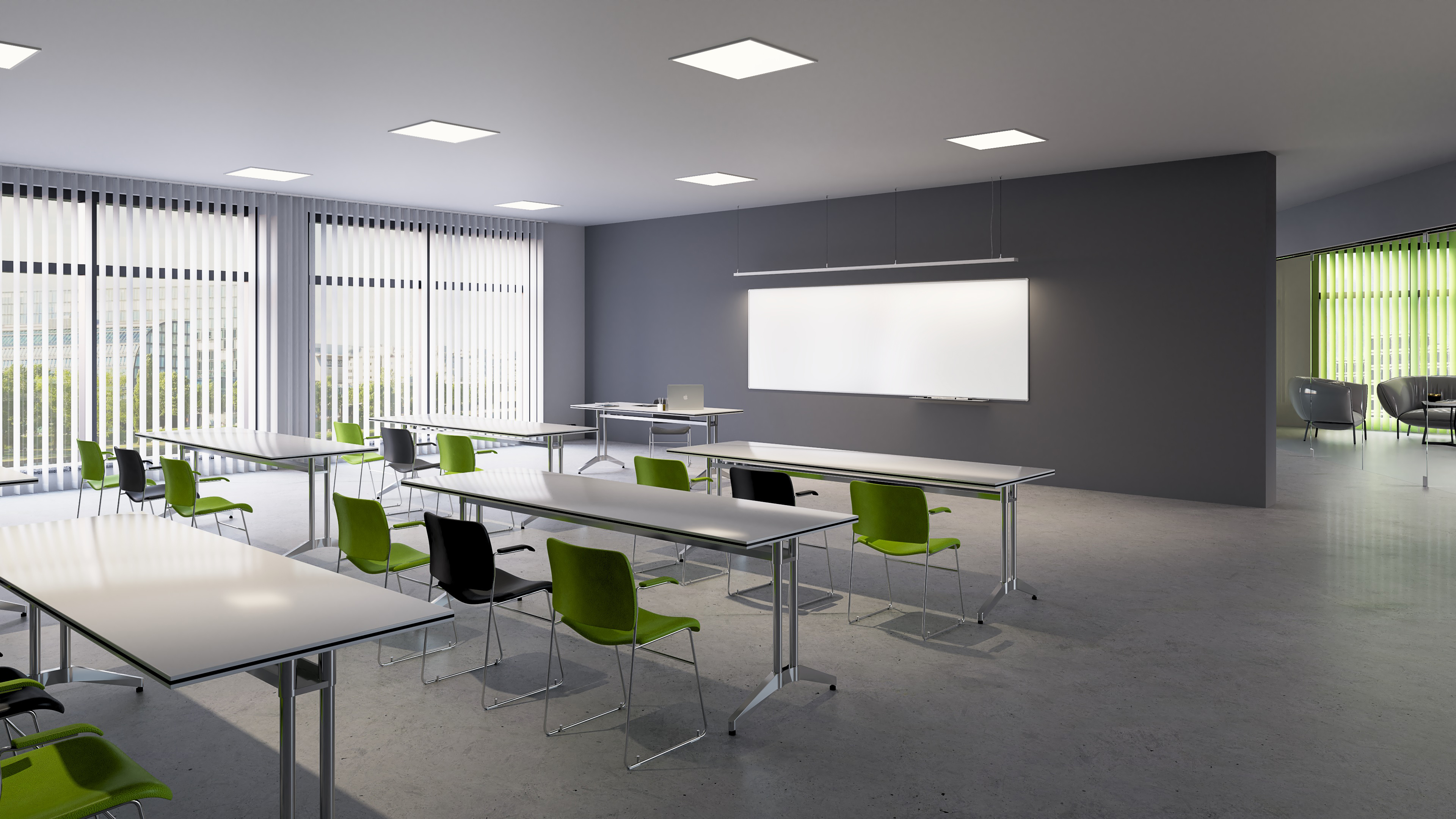Classrooms are an arena for many activities – reading and writing, student or teacher presentations, acting, playing, tests, and many more. Modern classroom layouts are adapted to various activities and needs – this calls for a flexible classroom lighting solution that ensures uniform brightness throughout the entire room. Certain zones may require specialised lighting, so areas like white- and blackboards should be equipped with adequate, separately switched presentation lighting.

Asymmetrical wall- or ceiling-mounted wall washers are excellent for presentation and board lighting. It’s also important for teachers to present their knowledge with soft and directed light shining at them at about 45°, so that their facial expressions and body language are clearly visible.
Natural daylight is preferred and utilised where available, however in recent years, Tunable White luminaires have been found to yield positive learning results. Classroom LED lights with variable light colour temperatures enhance children’s ability to concentrate and perform better on tests, and can even reduce hyperactivity. Artificial light should be dimmable and disturbing glare should be avoided to ensure proper visual comfort while learning.
With well-developed visual perception past the age of 12, better overall lighting in classrooms is needed in order for children to study effectively. Standard secondary schools do well with classroom lamps with only 20% uplight, or luminaires with appropriate optical systems to reduce glare and create uniform brightness. This ensures the correct light at students’ desks, contributing to a beneficial learning environment.
The best lighting for classrooms with children aged 7 to 12 years is a combination of direct and indirect light. The direct portion produces modelling shadows that help the perception of distance and three-dimensional objects, while the indirect portion creates good-quality working light and casts the light onto the walls and ceiling to increase vertical illuminance, improving the conditions for visual communication. Two ways of achieving this are pendant luminaires with 70% uplight and 30% downlight or semi-recessed luminaires that also cast light onto the ceiling.
After the age of 12, contrast conditions become more important in terms of lighting in classrooms. Excessive amounts of direct light will reduce contrasts, whereas a softer type of light (with more diffusion) will increase them. A microprismatic diffuser is ideal, both to create soft shadows and to control glare. Luminaires with these types of optics will surely provide good working conditions.
Lighting requirements in BS EN 12464-1:2021
| Type of task / activity area |
Lux-level (Em) |
Glare rating (UGRL) |
Uniformity (U0) |
Colour rendition (Ra) |
Em,z | Em,wall | Em,ceiling | Specific requirements |
|
| required | modified | U0 ≥ 0,10 | |||||||
| Classroom - general activities | 500 | 1000 | 19 | 0,60 | 80 | 150 | 150 | 100 | Lighting should be controllable |
| Black, green and white boards | 500 | 750 | 19 | 0,70 | 80 | - | - | - | Vertical illuminance |
| Projector and smartboard presentation | - | - | - | - | - | - | - | - | Lighting should be controllable |
| Light on teacher / presenter | - | - | - | - | 80 | 150 | Suitable vertical illuminance | ||
| Display board | 200 | 300 | 19 | 0,60 | 80 | - | - | - | Vertical illuminance |





